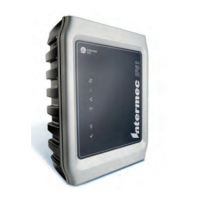Chapter 3 — Developing and Using RFID Applications
56 IF61 Fixed Reader User’s Manual
About Configuration Files
When you package your application for installation on the IF61,
you need to include a configuration file in the root directory of
the archive. The file must be named “userapp.conf” and must
include this syntax:
AUTOSTART=true|false
RUNAFTERINSTALL=true|false
CMDLINE=<command line to start the application>
where:
AUTOSTART specifies whether or not the application should
automatically be executed when the IF61 boots. When
AUTOSTART=true, the Auto-Start check box for this application
on the Application Control screen will be checked.
RUNAFTERINSTALL specifies whether or not the application
should be started immediately after installation.
CMDLINE specifies the application name and optional parameters
it accepts. Specify command line parameters as if the application
is being executed from inside the directory containing the
application.
This example runs a C# application named “testapp.exe” using
the Mono runtime:
CMDLINE=./testapp.exe
For Java applications, CMDLINE should specify the Java interpreter
location, the classpath, and the class containing the application’s
entry point. This example runs the class “HelloWorld”:
CMDLINE=/usr/java/bin/java -cp . HelloWorld
Note: After you install the application on the IF61, you can
enable or disable the auto-start feature from the web browser
interface. For help, see “Managing Applications” on page 60.
Note: Do not use the $JAVA_HOME environment variable in
the command line.
Note: The IF61 executes applications from their installation
directories, so the userapp.conf file does not need to include path
information.

